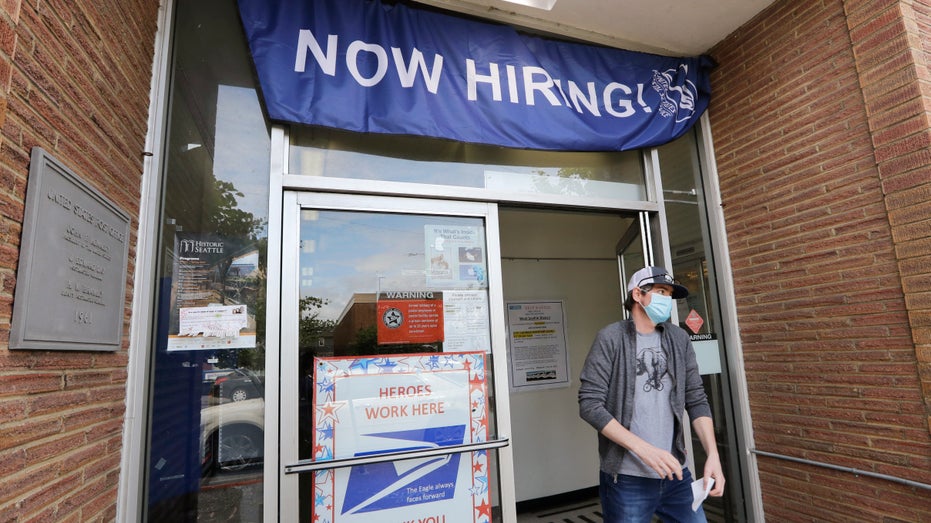The WARN Act: 5 fast facts
Here's what you need to know about the Worker Adjustment and Retraining Notification Act
As businesses have been forced to temporarily or permanently shut down due to the coronavirus pandemic, there are millions of workers laid off and millions more who are worried they may face the same fate.
But according to the Worker Adjustment and Retraining Notification Act, certain employees are eligible to receive advance notice of a potential layoff from their employer and could be entitled to assistance from their place of work to help them get back on their feet.
Below are five things you need to know about the WARN Act and the protections it provides for both employees and their employers.
CAN COMPANIES BE LIABLE FOR CORONAVIRUS WHEN EMPLOYEES RETURN TO WORK?
Why was the WARN Act created?
The Worker Adjustment and Retraining Notification (WARN) Act was enacted to ensure employers warn employees in advance about plant closings and mass layoffs to allow enough time to help affected workers find new employment opportunities or job training programs.

In this June 4, 2020 photo, a customer walks out of a U.S. Post Office branch and under a banner advertising a job opening, in Seattle. (AP Photo/Elaine Thompson, File)
Employers are required to coordinate with the State Rapid Response Dislocated Worker Unit, which helps provide on-site information about the labor market, including occupational information and economic trends, job search and placement assistance, on-the-job training, classroom training, entrepreneurial training, and referral for basic and remedial education.
What are employers required to include in a WARN Notice?
The notice must include a statement as to whether the planned action is expected to be permanent or temporary and, if the entire plant is to be closed, the expected date when the plant closing or mass layoff will commence and the expected date when the individual employee will be separated, an indication as to whether or not bumping rights exist, and the name and telephone number of a company official to contact for further information.
THESE ARE THE HEALTH INSURANCE DEADLINES FOR LAID OFF WORKERS
When is a WARN notice required?
Under the WARN Act, employers with 100 or more full-time workers must provide a written, 60-day advance notice about the closing of a single worksite affecting 50 or more employees, a mass layoff affecting at least 50 employees and one-third of the worksite’s total workforce, or 500 or more employees of a single worksite during any 90-day period.
A WARN notice must be given any time there is an employment loss, including temporary layoffs or furloughs lasting longer than six months. A temporary layoff or furlough without notice that is initially expected to last six months or less but later is extended beyond six months may violate the act unless the extension is due to business circumstances, including unforeseeable changes in price or cost, that are "not reasonably foreseeable at the time of the initial layoff" or if the notice is given when it becomes "reasonably foreseeable that the extension is required."
The act makes certain exceptions to the requirements if employers can show that the layoff or closing occurred due to a faltering company, which occurs when a company actively seeking capital or business believes in good faith that advance notice would prevent its ability to obtain such capital or business that would allow an employer to avoid or postpone a shutdown for a reasonable period. The act also makes an exception for unforeseen business circumstances or natural disasters.
In such instances, the WARN Act requires employers to provide as much notice to their employees as possible.
STATES OFFERING SHARED-WORK PROGRAMS TO HELP SOME BUSINESSES DODGE LAYOFFS
Who is covered under the WARN Act?
Employees covered under the WARN Act include those who are terminated or laid off for more than six months or who have their hours reduced by 50 percent or more in any six-month period as a result of the plant closing or mass layoff.
It also covers employees who will likely lose their jobs because of bumping rights or other factors, to the extent that such individual workers reasonably can be identified at the time notice is required to be given.
If the employer has a seniority system that involves bumping rights, which allow an employee to displace another employee as defined in a collective bargaining agreement, employer policy, or other binding agreement, then the employer must use its "best efforts" to give notice to the workers who will actually lose their jobs as a result of the system. If that is not possible, then an employer must give notice to the incumbent in the position being eliminated.
In addition, the WARN Act covers workers who are part-time or those who are on a temporary layoff but have a "reasonable expectation of recall," including those on workers’ compensation, medical, maternity, or other leave.
GET FOX BUSINESS ON THE GO BY CLICKING HERE
How is the WARN Act enforced?
The WARN Act is enforced by private legal action in the U.S. district court for any district in which the violation is alleged to have occurred or in which the employer transacts business. An employer may be required to prove that it could not foresee the circumstances if a WARN Act action is brought against them.
The role of the U.S. Department of Labor is limited to providing guidance and information about the WARN Act.




















